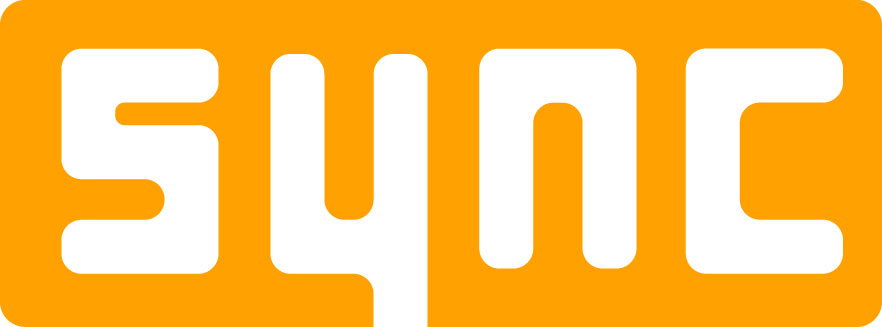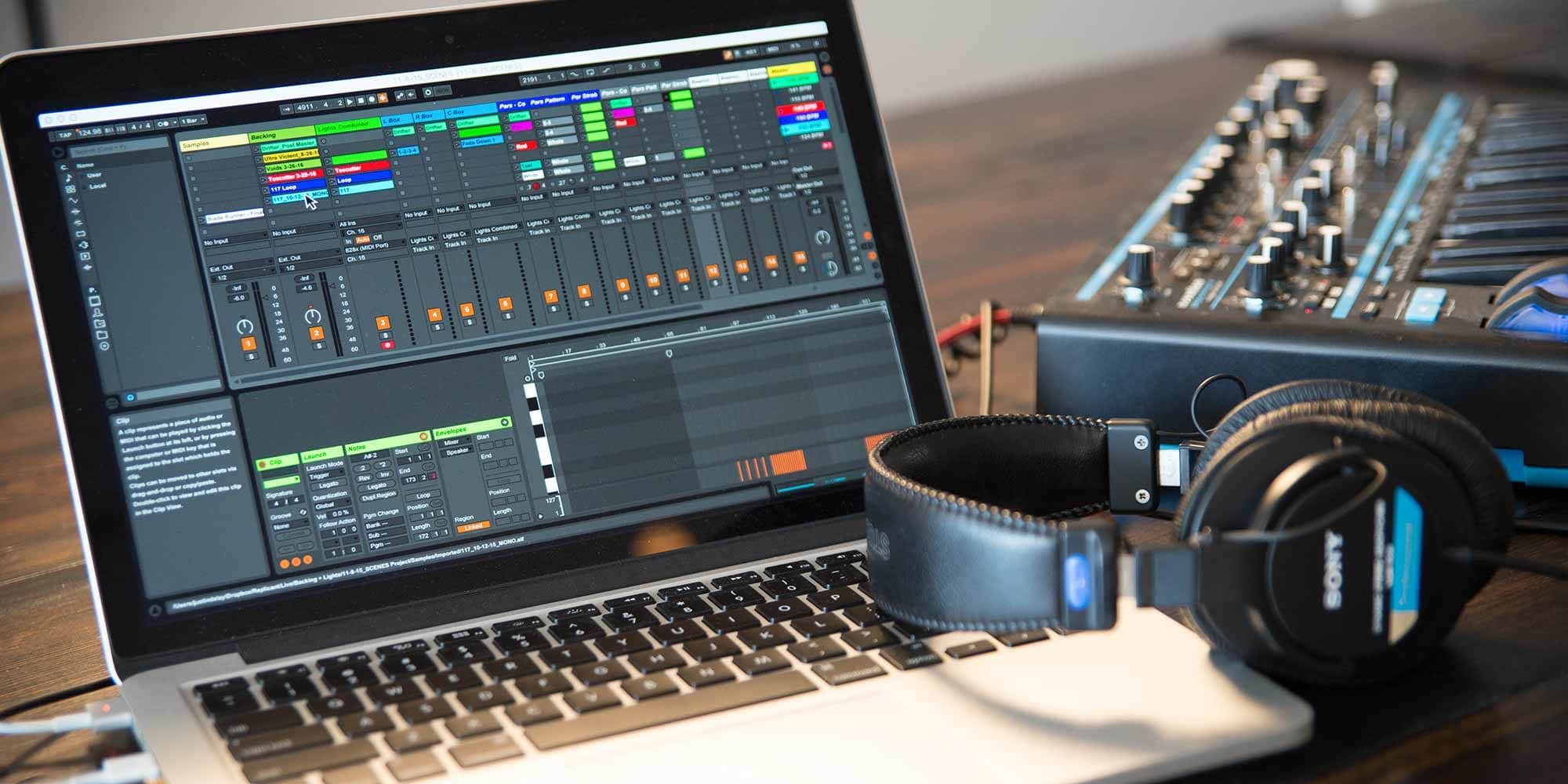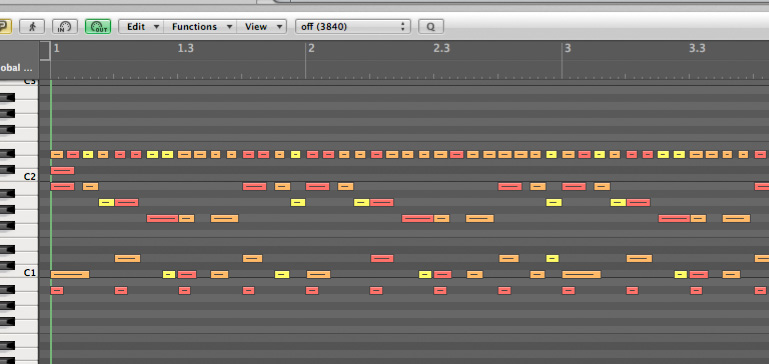

With Reverb SYNC's launch last week, we showcased a selection of ten powerful free software plugins. This week, we beam more useful content to newly orbited plugin users with our helpful guide to explaining some common terms you'll encounter in the world of digital music production.
- Digital Audio Workstation (DAW)
- Musical Instrument Digital Interface (MIDI)
- Sequencing
- Digital Signal Processing/Digital Signal Processors (DSP)
- Codec
Digital Audio Workstation (DAW): A DAW is the software that gives you the ability to record, mix, and play back music with your computer. DAWs can be used with external hardware interfaces to record live band sessions using microphones, as well as to record instruments plugged directly into the hardware interface. Individually, DAWs are powerful musical tools that give you the ability to write, arrange, and engineer songs entirely on your computer screen. The highly polished quality of modern DAWs and plugins gives your computer the capabilities of a professional recording studio minus the physical requirements.
With a DAW, you can:
- Customize rapid songwriting workflows with intuitive visual interface
- Add dozens or hundreds of instruments and effects to your track using plugins
- Mix and master your tracks with precise plugin utilities for professional-grade home engineering
- Keep your modern digital studio continuously up-to-date with automatically installed software updates
Popular DAWs include Avid ProTools, Apple Logic Pro, Steinberg Cubase, Ableton Live, Presonus Studio One, MOTU Digital Performer, Cockos Reaper and Acoustica Mixcraft.
RELATED ARTICLE
Musical Instrument Digital Interface (MIDI): MIDI is the universal data language that syncs up instruments and plugins to your DAW. MIDI can be used to connect individual instruments from different companies and tell them to play in tandem. The MIDI standard was developed in the early '80s by Oberheim Electronics founder Tom Oberheim, Sequential Circuits president Dave Smith, and Ikutaro Kakehashi, the founder of Roland.
For example, loading your DAW with a plugin like Ample Sound’s Ample Bass P II Lite allows you to program rhythmic bass patterns on your track. These patterns are simultaneously converted to MIDI data that can be shared with other plugins such as the Symptohm PE by Ohm Force, which receives the MIDI data and converts it to a keyboard melody played in realtime with a tempo shared by both plugins.
With MIDI, you can:
- Control most functions of modern software instruments, including note value, tempo, volume, velocity, and pitch of the sound
- Adjust the various parameters of effect plugins added to your track
- Tell multiple plugin instruments to begin playing in unison
- Easily transfer musical data between hardware devices and computers with USB or a dedicated MIDI interface
MIDI has maintained the standard of digital music communication for over 30 years, and has advanced with mobile culture so that modern instruments can now exchange MIDI data wirelessly in real time.
Sequencing: A sequence represents a pattern of repeating musical activity, such as the order of notes arranged into a melody, or a progression of chords arranged to form a song. Sequencing is a utility function of dedicated plugins and DAWs to set the note value, pitch, volume, and intensity of musical phrases created by software.
With sequencing, you can:
- Compose multiple lines of music in a DAW and distribute them to individual plugins
- Create limitlessly unique musical melodies and percussive patterns
- Write intersecting musical moments for precise playback by multiple instrument plugins
- Randomize the order of notes in a melody or completely reverse portions of a song to instantly give your track curiously unpredictable movement
Sequencing initially required meticulous programming sessions with a hardware interface such as the iconic Akai MPC. Now, sequencing is intuitive and instantaneous with a DAW. A huge portion of modern popular music is written and recorded by sequencing in DAW software.

Piano Roll Sequence in Apple Logic
Digital Signal Processing/Digital Signal Processors (DSP): Digital Signal Processing (DSP) is a mathematical manipulation of digital signals carried out by a microprocessor called a Digital Signal Processor (also abbreviated as DSP).
While general-purpose chips found in your computer can indeed process digital signals, DSP becomes significantly more efficient when given its own dedicated microprocessor(s). Think of the “powered” products on the professional audio market like the Universal Audio Apollo interfaces and UAD-2 cards, or Pro Tools HD PCI cards. The reason these are so much more powerful and can run far more plugins with lower latency is thanks to purpose-built DSP chips.
RELATED VIDEO
Codec: In the music world, a codec (short for “coder-decoder”) is a device or software program that compresses digital audio data to get the file size down, and then decompresses it to be played back as close to the original fidelity as possible.
There are two types of codec: lossy and lossless. With a lossy codec, like the ones used to create MP3 files from uncompressed WAV files, the original information is compressed and stored in a way that loses data along the way. They do have their uses, however. Though there are a few “full fidelity” streaming sites online for on-demand music, it requires significant “server muscle” and a very fast internet connection to transmit this uncompressed data. Most streaming sites, for this reason, will serve files which have been compressed with a lossy codec.
Lossless codecs, on the contrary, encrypt and store the compressed data in a manner which allows the “decode” half of the codec to theoretically return the file to its original state without losing any data. Apple Lossless and FLAC are two popular examples of lossless audio codecs.
The terms above are standard but powerful starting points to help you begin exploring the core features and advanced functionality of your plugins and DAW. Stay engaged with Reverb SYNC for more helpful software guides and exciting developments in the digital music galaxy.
Software & Plugins

